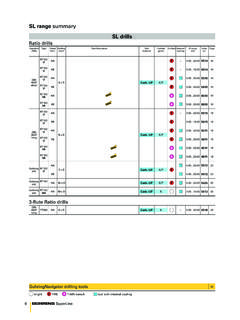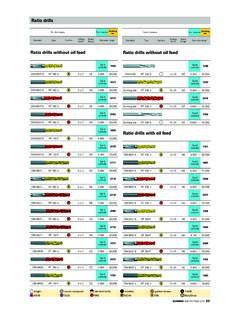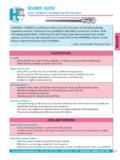Transcription of in the Treatment of COPD with Chronic Bronchitis - …
1 Comparison of the Lung flute with the Acapella in the Treatment of copd with Chronic Bronchitis Sanjay Sethi, 1,2 Jane Maloney, 2 Lori Grove, 2 Pamela K. Anderson R. N. 2 1 VA WNY Health Care System, Buffalo, NY and 2 University at Buffalo, SUNY, Buffalo, NY Corresponding Author: Sanjay Sethi, VA WNY Healthcare System (151) 3495 Bailey Avenue Buffalo, NY 14215 Telephone: 716-862-7875 FAX: 716-862-6526 Email: Word count: 2554 Source of support: Medical Acoustics, Inc. 2 ABSTRACT Chronic obstructive pulmonary disease ( copd ) is characterized by mucus hypersecretion that contributes to the morbidity and is associated with increased mortality. The Lung flute is a new oscillatory positive expiratory pressure (OPEP) device that produces a low frequency acoustic wave with vigorous exhalation that increases mucociliary clearance. We hypothesized that the Lung flute , used on a twice daily basis will provide clinical benefit to patients with copd with Chronic Bronchitis .
2 Acapella , an OPEP device which is currently available and approved for the clearance of respiratory secretions was used as a comparator in a randomized open label eight week trial in 40 copd patients. Thirty seven patients completed the study. For the primary end point, change in 24 hour dry sputum weight from baseline, the two treatments were equivalent. At 8 weeks, both devices improved symptoms as assessed by the Chronic copd questionnaire as well as quality of life as assessed by St. George Respiratory questionnaire, with the Lung flute associated with larger changes than the Acapella . There was no change in baseline lung function over 8 weeks in both arms. Adverse effects were minor, with only 1 patient discontinuing Treatment because of musculoskeletal chest discomfort related to blowing vigorously in the Lung flute in the initial week of Treatment . The Lung flute is a safe and effective OPEP Treatment for mucus hypersecretion in copd , and is equivalent to the Acapella for this purpose.
3 Abstract Word Count: 234 3 Mucus hyperesecretion and impaired mucociliary clearance is a common problem in patients with copd , and contributes significantly to the morbidity and mortality of this disease (1, 2). In spite of the need for efficacious, convenient and safe Treatment for mucus hypersecretion, current choices are few with limited data to support their efficacy in copd (3, 4). The Lung flute is a new small self-powered audio device that belongs to the family of Oscillatory Positive Expiratory Pressure (OPEP) devices, which includes the Flutter and the Acapella (5, 6). When blown into with an exhalation vigorous enough to make the reed oscillate, the Lung flute generates a sound wave of 16 to 22Hz with an output of 110 to 115 dB using H2O of pressure. This sound wave has the ability to travel down the tracheobronchial tree and vibrate tracheobronchial secretions. This vibration enhances mucociliary clearance of the lower respiratory tract thereby resulting in the induction of sputum.
4 This functionality of the Lung flute has been applied to sputum induction for diagnostic testing, for which it is currently a Food and Drug Administration (FDA) approved device. We hypothesized that the ability of the Lung flute to enhance mucus clearance from the lower airways could be used for therapeutic purposes in copd , if the device was used on a Chronic basis. This report is the first systematic evaluation of the therapeutic application of the Lung flute in human subjects. The efficacy and safety of the Lung flute in a group of copd patients with Chronic Bronchitis was compared with a predicate device, the Acapella (Smiths Medical), which works on a similar principle and is available for therapeutic use in lung hypersecretory disorders. The primary end point of the study was the comparison of 24 hr dry sputum weights with the use of the Lung flute as compared to the Acapella . Several secondary end points were assessed for efficacy and safety, including copd symptoms, health status, spirometric lung function and daily albuterol use.
5 4 Methods Study Design This was an eight-week, randomized, controlled, two arm parallel study that was powered to demonstrate equivalency of the new device, the Lung flute , to the predicate device, the Acapella . The study was open label. The clinical trial registration number of this trial is NCT00560105. Subjects The study was approved by the Human Studies subcommittee for the VA WNY Healthcare system. We planned to enroll 40 subjects with copd with Chronic Bronchitis at a single center (Buffalo VA Medical Center). Inclusion criteria were: a) at least 40 yrs of age, b) presence of airflow obstruction by spirometry (GOLD Stage 2-4), c) presence of Chronic Bronchitis , cough productive of sputum on most days of the week, d) current smoker or ex-smoker with at least 10 pack yrs of smoking history (7). Exclusion criteria were a) exacerbation of copd or hospitalization for copd within 8 weeks prior to enrollment, b) predominant asthma and bronchiectasis by clinical assessment, c) history of cough syncope d) pregnant or nursing women e) inability to comply with study procedures.
6 Procedures The study consisted of a screening visit, two weeks of intervention free run-in, a randomization visit and then on Treatment clinic visits at 1, 2, 4, 6, and 8 weeks. Participants who met the inclusion/exclusion criteria on screening were enrolled and provided with a daily 5paper dairy to record symptoms and rescue albuterol use. In addition they were instructed to provide two 24 hr sputum collections over the next 2 weeks. A randomization visit was done within 2 weeks of the enrollment visit. Participants who were compliant with the 24 hr sputum collection and at least 50% of the daily dairy entries were randomized to either the Lung flute or the Acapella . Randomization was done by a pre-specified randomization table. Detailed instructions for the use of either device were provided as follows.
7 For the Acapella , participants were instructed to watch the instructional video provided by the manufacturer, the device was adjusted for the participant as per the manufacturer s instructions, and they were instructed to use the device twice a day for 2 cycles consisting of 20 breaths followed by 3 huff coughs. For the Lung flute , participants were instructed to blow twice in to the device vigorously enough to make the reed oscillate, followed by 5 normal breaths. This was repeated 10 times, followed by 3 huff coughs to complete 1 cycle. Two such cycles were recommended twice a day. Baseline Spirometry, Clinical copd questionnaire (CCQ) and St. George s Respiratory Questionnaire (SGRQ) were obtained at the randomization visit (8-10). Participants were instructed to complete a daily dairy every evening in which they recorded their breathlessness, cough and sputum severity on the breathlessness, cough and sputum scale (BCSS), as well as the number of puffs of rescue albuterol used in the past 24 hrs (11).
8 At each subsequent on therapy clinic visit, 24 hour sputum samples were collected, a clinical examination was performed, adverse effects were recorded and daily diaries were collected. In addition, at the end of therapy 8 week visit, spirometry, CCQ and SGRQ were completed. The Lung Flutes were replaced at every visit and the patient was instructed to use each Lung flute for 1 week. 6 Dry Sputum Weights Twenty four hr sputum collections were transferred to pre-weighed centrifuge tubes and weight of total sputum was measured. All samples were then centrifuged at 10,000g for 10mins at 4oC, and the supernatant obtained was removed. The residual pellet and tube were re-weighed and the dry sputum weight was obtained by subtracting the tube weight from the value obtained. Data analysis The primary endpoint of dry sputum weight was assessed by using mixed models.
9 Mixed models were also used to determine changes in daily BCSS scores and use of inhaled albuterol from baseline in the two groups of patients. Secondary end-points of changes between baseline and week 8 in spirometric measures, SGRQ and CCQ were assessed by paired t tests. A p< was considered significant. Results Participants We enrolled 45 subjects, of which 5 subjects either did not meet the initial inclusion/exclusion criteria (n=3) or did not meet the compliance criteria between the enrollment and randomization visit (n=2). Of the 40 subjects who were randomized, 20 each were randomized to the 2 devices. Of these 40 subjects, 37 completed the study. Of the 3 subjects who did not complete the study, one was randomized to the Acapella (participant was non-compliant with study instructions) and 2 were randomized to the Lung flute (1 discontinued 7 Lung flute after 1 week of use because of musculoskeletal chest discomfort with use of the device and 1 was non-compliant with study instructions).
10 Baseline clinical characteristics of the forty subjects randomized into the study are described in Table 1. There were no statistically significant differences in the demographics, smoke exposure history and lung function between the subjects enrolled in the two arms of the study. Comparison of dry sputum weights between the Lung flute and the Acapella In order to test the overall Treatment effect on dry sputum weight over the course of the study, mixed effects analysis were performed. These models allow us to account for the longitudinal nature of the data. We assumed that the observations collected within each patient were correlated; however, observations collected across patients were assumed to be independent. Dry sputum weights obtained prior to and at randomization were regarded as baseline measurements, while those obtained at week 1, 2, 4, 6 and 8 were examined for Treatment effects.





